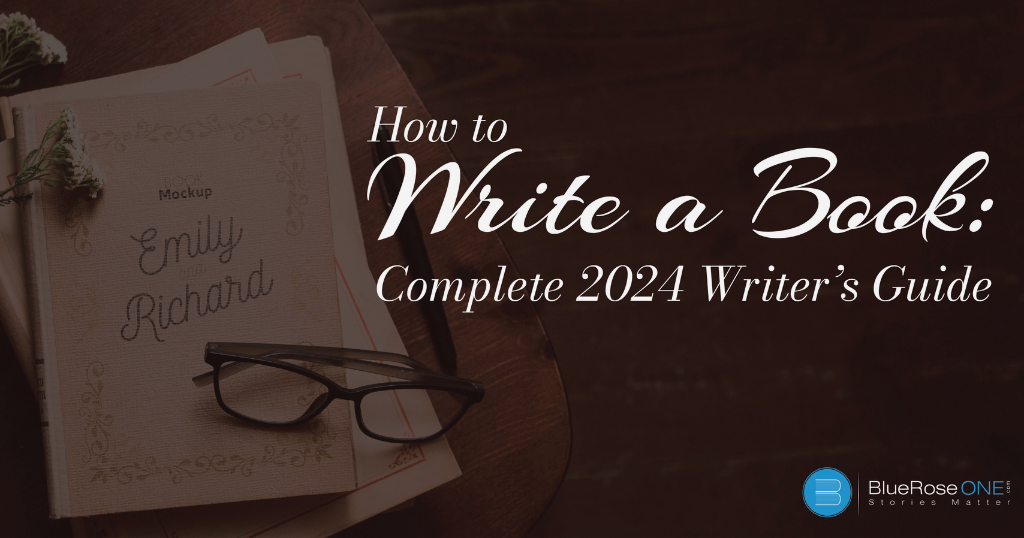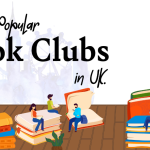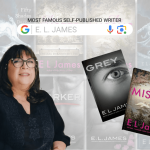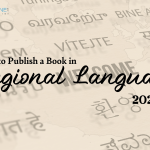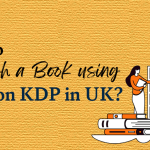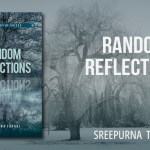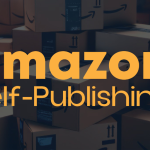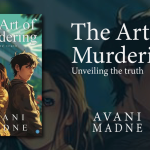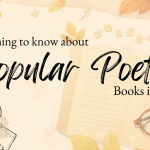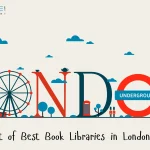Do you feel like you have a lot of thoughts jumbled up in your mind and want to say it all? Why not try writing it in a book?
Writing a book is as easy as tedious it sounds – confusing right? Thinking about writing a book is a contemplative journey that begins with a spark of inspiration and a canvas of limitless possibilities. The desire to craft a narrative, whether fiction or nonfiction, often works as a motivating factor within, beckoning writers to start on a literary journey. The process of contemplating a book involves introspection, ideation, and a profound connection with one’s inner storyteller.
What exactly do you wish to write?
The pivotal first step for any writer involves predefining the target audience for their book. This crucial decision shapes the narrative, tailoring it to the specific readership that the author envisions. Additionally, writers must make a conscious choice regarding the genre or category of their book, be it fiction or nonfiction. This decision entails determining whether the work falls into the nonfiction world, like a self-help guide, biography, or historical account, or if it aligns with a fiction category, encompassing genres such as science fiction, fantasy, mystery, or romance.
For instance, a writer might opt to create a collection of poems, short stories, or delve into flash fiction—concise narratives that unfold in just a few minutes. Another intriguing genre is creative nonfiction, also known as literary journalism. This unique style blends factual accuracy with fictional techniques, introducing elements like character development and scene setting.
Regardless of the chosen genre, both the content and style must harmonise with the expectations of the intended audience. This thoughtful alignment ensures that the narrative resonates effectively with readers, delivering an experience that meets their expectations.
Select a couple of paths of genres to choose from
Choosing the type of book may commonly act as a preparatory step in refining the main topic, and the two phases are typically linked since the type of book chosen may indicate a certain concentration. The core of a good book is its concentration, which writers achieve by intentionally restricting their theme. This technique allows them to focus on important aspects while discarding unnecessary information. Employing reporting questions, such as who, what, when, where, and how, can help you concentrate.
For example, if a writer intends to create a historical fiction work set in a specific century, the genre (historical fiction) naturally directs attention towards studying the complexities of that historical period. To guarantee a rich and well-rounded story, the writer may ask reporting questions like when and where the events take place, who the main players are, and how historical facts interact with fictitious components. This technique not only refines the topic but also identifies areas that may need extra study, context, or historical background.
Brainstorm the themes and sub-genres
The brainstorming phase stands out as the most creative part of the book-writing process. Writers here break free from the restraints of precise syntax and punctuation, allowing their thoughts to flow freely and forge unorthodox connections. It is a phase of research in which associative leaps lead to unexpected pathways or inventive connections. The emphasis is on exploration and letting creativity flow freely.
For example, if a writer intends to create a science fiction novel, the brainstorming session may include investigating futuristic themes, imagining alternate universes, and considering the influence of new technology on society. During this stage, the writer is not concerned with organising or polishing their thoughts. Instead, it’s about gathering material, giving structure to first ideas, and determining what pieces are already relevant to the book and which require more development.
In science fiction, brainstorming might result in the invention of new alien species, creative technology, or unexpected outcomes of scientific achievements. The purpose is to encourage a free-flowing exchange of ideas, allowing the writer to unearth unexpected facts or a new viewpoint. At this stage, the emphasis is on creativity and experimentation, laying the groundwork for the more organised phases of writing that will come later.
You may also like: Negative Adjectives to Describe People: Examples and Meanings
Plan your book.
With a well-defined concept in hand, the next crucial step is to meticulously plan the structure of your book. Consider the opening and closing chapters, and deliberate on the central portion, which constitutes the heart of your content. Break down your book into logical sections or chapters, outlining the focus of each segment.
For example, if you’re planning to write a mystery novel, envision how you want to start and conclude the story. Deliberate on the key plot twists and character developments that will unfold in the middle of the narrative. By structuring your book in this way, you provide a roadmap for both yourself and your readers, ensuring a coherent and engaging storyline.
Research
Research serves as a vital component for both fiction and non-fiction works. Even in the realm of fiction, ensuring believability and realism is paramount. In non-fiction, thorough research is indispensable to guaranteeing the accuracy and currency of the information presented. Conduct comprehensive research by delving into books, articles, and relevant materials tied to your chosen topic. Capture essential details in your notes, laying the groundwork for a well-informed and credible narrative.
Consider a scenario where you’re crafting a historical fiction novel set in a specific era. Your research might involve exploring the cultural nuances, historical events, and societal norms of that time period. This attention to detail enhances the authenticity of your narrative, making it more compelling for readers.
You may also read: Negative Adjectives to Describe People: Examples and Meanings
Start the writing process
Now that your research and planning stages have reached fruition, it’s the opportune moment to set pen to paper and commence the writing process. An essential reminder: Your initial draft doesn’t demand perfection. The primary objective is to translate your well-conceived ideas into written form. Disregard concerns about grammar intricacies or sentence structure during this phase; the emphasis is solely on giving life to your narrative.
Consider a scenario where you’re crafting a self-help book on personal development. In this preliminary writing phase, your goal is to convey your insights and guidance without getting bogged down by grammatical nuances. For instance, if you’re addressing the importance of goal-setting, focus on articulating your thoughts without the constraint of perfect grammar. Write freely about the significance of defining clear objectives, drawing from your research and planning.
Establishing writing goals
To maintain a sense of momentum and discipline, set realistic and achievable daily writing goals. Begin with a modest target, such as aiming for 500 words each day. As you grow more accustomed to the writing process, progressively elevate your daily goal. This incremental approach ensures a steady and sustainable writing routine.
Continuing with the self-help book example, your earliest writing sessions may focus on clarifying essential themes connected to self-awareness and personal development. The goal is to articulate these concepts logically, with the word count serving as a practical indicator of your progress. Gradually, as your writing confidence grows, you may broaden your daily aim and go into more complex areas of your selected topic.
Remember, the goal of this step is to get your imagination and ideas onto paper, laying the groundwork for further refining and polishing in the editing phases.
You may also read: Archangels Names List: Meanings, Powers, and Symbolism
Edit, revise, and polish
With the completion of your initial draft, the pivotal phase of editing and revising beckons. This step is instrumental in elevating your work to its zenith. Begin by meticulously reading through your manuscript, identifying areas ripe for improvement. Consider taking a brief hiatus from your work to return with fresh perspectives, allowing you to scrutinise your creation with renewed objectivity.
Imagine you’ve crafted a mystery novel, and your first draft unfolds a riveting storyline with compelling characters. During the editing process, you might notice certain plot intricacies that require refinement. Taking a temporary hiatus enables you to approach the material with a fresh mindset, aiding in the identification of narrative gaps or character inconsistencies.
External Feedback
Enlist the assistance of others by having someone else peruse your work and offer constructive feedback. This external perspective provides invaluable insights, potentially highlighting aspects you might have overlooked. Suppose your mystery novel introduces a complex web of characters. External readers, aka beta or alpha readers, may pinpoint areas where character motivations need further clarification, prompting you to fortify these elements during the revision phase.
Polishing for perfection
The subsequent step involves the meticulous polishing of your manuscript. Attend to granular details such as grammar, spelling, punctuation, and overall sentence structure. This meticulous attention guarantees a final product that not only adheres to linguistic standards but also boasts structural integrity.
In the context of the mystery novel, polishing entails scrutinising each sentence to ensure it contributes seamlessly to the overall narrative flow. Correcting grammatical nuances and refining sentence structures enhances the readability of your work, creating a compelling and polished manuscript that stands testament to your commitment to excellence.
You may also like: 150+ Positive Words That Start with O to Brighten Your Vocabulary
Publish Your Literary Creation
As you stand on the precipice of completing your magnum opus, the ultimate step awaits—publishing your book. This crucial decision unfolds in a realm of diverse options, each with its own unique trajectory and considerations. Traditional publishing and self-publishing stand as the two primary avenues, with nuances and opportunities distinctive to each.
- Traditional Publishing
Opting for traditional publishing entails submitting your meticulously crafted manuscript to established publishing houses. Should your work captivate their discerning eyes, they will take charge of pivotal aspects like editing, design, and the intricate process of bringing your creation to the public sphere. Imagine submitting a historical novel to a prestigious publishing house, and upon acceptance, seasoned professionals meticulously refine historical accuracies and design a captivating cover that befits your narrative. - Self-Publishing
Conversely, self-publishing thrusts you into the driver’s seat, providing unparalleled control over the entire publishing trajectory. However, this autonomy demands a more hands-on approach, requiring you to spearhead editing, design, and the overall publishing process. Picture yourself choosing to self-publish a collection of your poetry. You meticulously curate the layout, select cover art that resonates with your poetic themes, and dictate every facet of your book’s appearance. - Hybrid Publishing
For those seeking a middle ground, hybrid publishers offer a fusion of self-publishing autonomy with the professional support of traditional publishing. It’s akin to blending the best elements of both worlds. If, for instance, you’re unveiling a cookbook that uniquely blends personal anecdotes with culinary expertise, a hybrid approach allows you to retain creative control while benefiting from professional editorial guidance.
Ultimately, the decision rests on your aspirations, preferences, and the specific nuances of your literary creation. Whether traversing the well-trodden path of traditional publishing or embracing the empowerment of self-publishing, each avenue culminates in the gratifying moment when your words transform into a tangible, widely accessible book.
In conclusion, the act of writing a book is more than just words on paper; it is a transforming journey that invites authors to dive into the depths of their imagination and share their stories with the world. The last act of publication is a triumphant moment in which the produced words become a concrete being ready to go on its own journey in the hands of readers. As authors see their literary creations take flight, the result is more than simply a book; it’s a monument to tenacity, passion, and the eternal power of narrative.
Publish your book with BlueRoseONE and become a bestselling author. Don’t let your dream of becoming an author fade away, grab the opportunity now and publish your book – be it fiction, non fiction, poetry or more.

